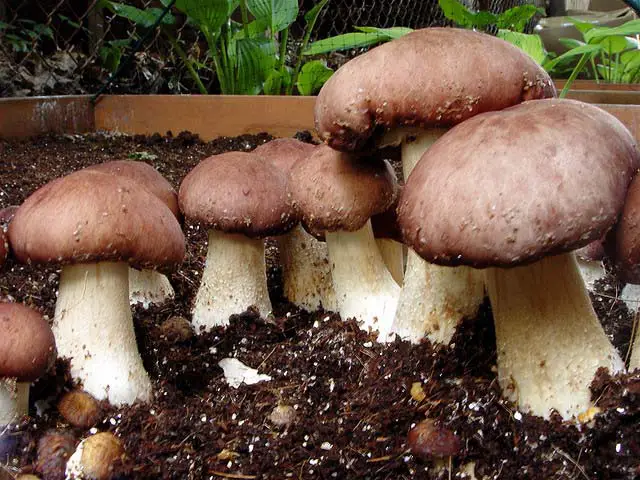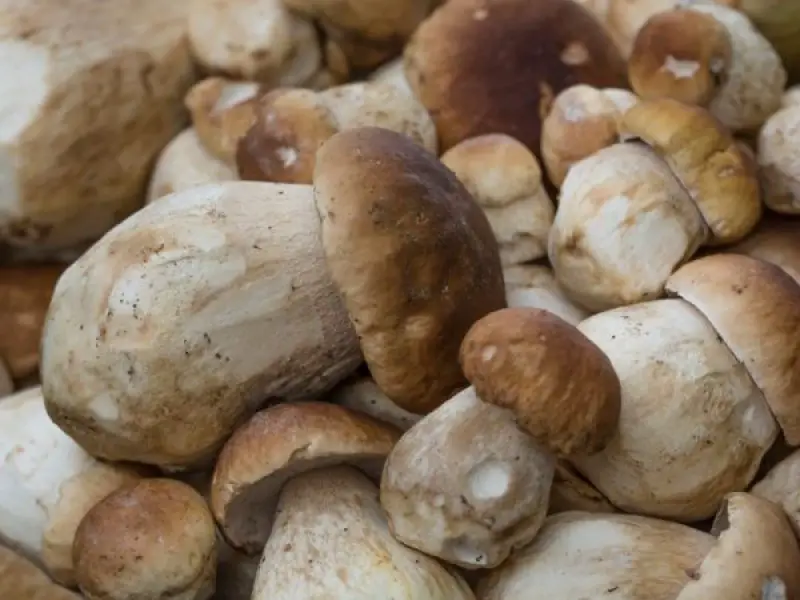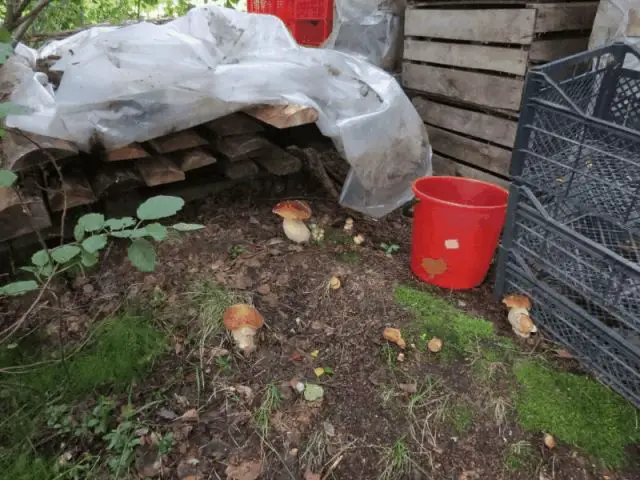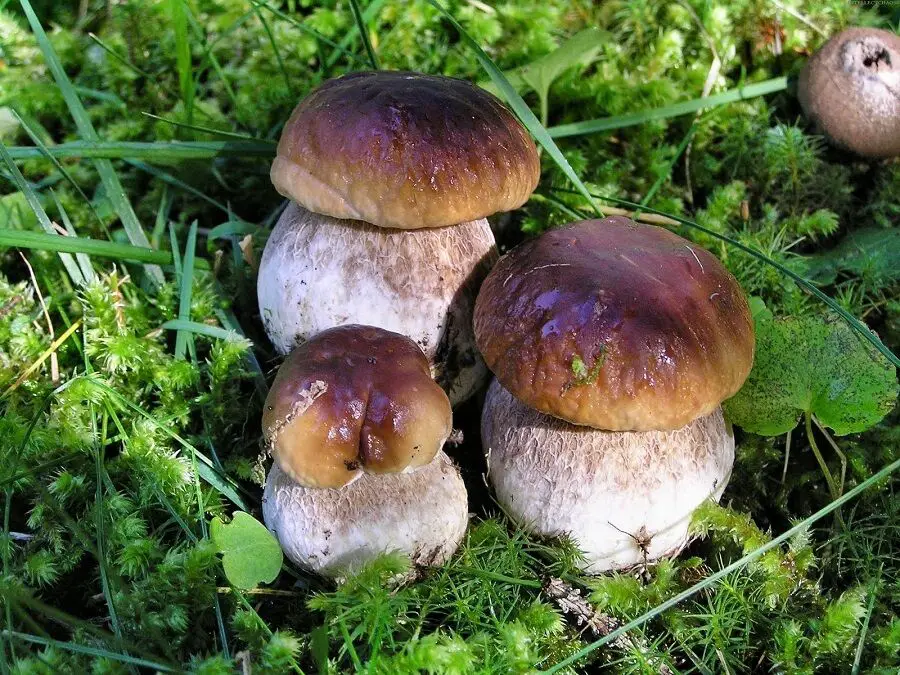The porcini mushroom, also known as the penny bun or Boletus edulis, stands out as a true culinary gem, rivaled only by the esteemed truffle in terms of taste. Characterized by its thick, meaty texture and a distinct aroma reminiscent of unprocessed wood, the porcini can elevate any meal to a celebratory level. However, its appeal is somewhat diminished by its high price and scarcity, as not all aficionados reside close to the pine forests mushroom variety grows. Fortunately, it’s possible to cultivate porcini mushrooms at home or within a greenhouse, both for personal enjoyment and as a potential business venture.

How to grow porcini at home and in greenhouse? (penny bun, boletus edulis)
Table of Contents
Can you grow porcini mushrooms at home?
Fresh porcini mushrooms often prove elusive, even within the aisles of the largest supermarkets. While dried versions of these forest treasures are more readily available, they inevitably sacrifice some of their flavor and nutritional benefits, and the cost remains steep. In light of this, a growing number of enthusiasts are exploring the cultivation of this variety right in their own homes.
While not without its challenges, the ongoing refinement of mushroom cultivation techniques enables continuous yield enhancement. Furthermore, adept farmers, upon scaling up their home production, often transition into commercial ventures, transforming their unconventional hobby into a lucrative business, bolstered by modest initial investments.
To successfully cultivate porcini mushrooms at home, it’s essential to replicate their natural habitat as closely as possible. Typically found in coniferous and mixed forests, these mushrooms thrive under specific conditions, including:
- Scattered light, mimicking the dappled sunlight of their forest environments.
- A high humidity level, crucial for their growth and development.
- A nutrient-rich medium, or substrate, composed of various components that provide the necessary nourishment.
- Efficient ventilation to prevent stagnation and inhibit the growth of pathogenic bacteria, ensuring a healthy growing environment.
How to grow porcini at home for beginners?

Creating forest-like conditions for growing mushrooms within a private house or apartment is achievable by adhering to several straightforward guidelines and conducting thorough preparatory activities. These preparatory steps include:
- Complex Disinfection: To mimic the cleanliness of a natural forest floor and to prevent contamination and disease, it’s vital to disinfect the space. This can be done using chlorine-based disinfectants and smoke bombs to thoroughly cleanse the area of any potential pathogens.
- Installation of Racks: To efficiently use space and simulate the layered growth environment of a forest, installing racks provides an organized structure for placing the containers or beds of mushrooms. This setup helps in creating an orderly cultivation area that can be easily managed and monitored.
- Preparation of Containers: Suitable containers are essential for holding the substrate and growing the mushrooms. These containers should be prepared to ensure they provide the right conditions for mushroom growth, including adequate space for expansion, breathability, and moistureretention.
By closely following these steps and maintaining the required environmental conditions such as scattered light, high humidity, a nutrient-rich substrate, and good ventilation, it’s possible to create a conducive growth environment for mushrooms right at home, whether in an apartment or a private house.
Selection of porcini mushroom mycelium
Once all the preliminary steps have been completed, your next task is to choose the mycelium starter, essentially germinated fungal spores essential for mycelium growth. Currently, you have two main methods for sourcing your starting material:
- The first method involves purchasing pre-prepared mycelium, available in nearly any online gardening store. To use it, simply hydrate the dry grains from the package in a solution as per the provided instructions, and then plant them in your ready substrate. However, this approach doesn’t always guarantee successful germination.
- The second method, which is more dependable, requires you to prepare the mycelium yourself. This starts with acquiring mature, healthy mushrooms. The process of creating your own starter isn’t complicated and involves pulverizing the mushroom caps, where the spores are located within the gills.
This paste is then combined with a homemade solution of water, potassium permanganate, and granulated sugar.
- Fascinatingly, this sugary mixture acts as a nourishing broth that encourages the spores to germinate, leading to the development of your starter material.
Porcini Substrate preparation

Typical garden soil isn’t conducive to mushroom cultivation, as these fungi thrive in sandy and clay soils enriched with forest detritus, ensuring optimal aeration. While pre-made mixtures are available, creating your own blend is often more effective.
Begin with a base of airy sandy or loamy soil, incorporating a mix of sand and river clay to make up no more than a quarter of the substrate’s total volume. Add in dry grasses, leaves, finely ground bark, and conifer branches, along with a bit of sphagnum moss or lichen.
Ideally, these ingredients should be gathered from the forest, mushrooms’ natural habitat. However, if forest resources aren’t accessible, purchasing a commercial soil mix designed for epiphytes, which includes natural enhancers like vermiculite and perlite, is a viable alternative.
Prior to planting, it’s crucial to sterilize the soil mixture by heating it in an oven for several minutes and then allowing it to air out for two weeks. Given that the substrate will dry out by planting time, ensure it is thoroughly moistened to promote healthy mushroom growth.
planting porcini mushroom mycelium substrate in containers
Arrange the soil in your planting containers in multiple layers, aiming for a total depth of around 35 cm. It’s crucial to lightly compress the top layer, as this promotes optimal mycelium growth.
Tip: Remember to include a layer of expanded clay at the bottom for drainage, which helps prevent water from pooling.
Experience indicates that while mushrooms are not fond of heat, they do require a warm environment initially. Keep the temperature around +20°C until you notice the first sprouts, typically within 10 days. Subsequently, reduce the temperature to +16-17°C and maintain this cooler setting continuously.
During this period, it’s essential to keep both the soil and air moist by regularly misting and placing containers of water around.
harvesting porcini Mushroom
If all steps have been executed correctly, the first ripe fruits may emerge within 3-3.5 weeks. At this stage, it’s advisable to harvest the mushrooms from the substrate to allow room for the mycelium to establish new colonies. Harvesting involves delicately severing the mushrooms at the stem with a sharp knife, then covering the cut with fresh disinfected substrate to safeguard against harmful bacteria.
Initial harvests might not yield abundantly, yet with consistent care, it’s feasible to gather up to 25 kg of premium mushrooms from just 1 square meter within a few months.
Remember, the mycelium’s lifespan is finite, necessitating a complete restart of the process every 3-5 years.
How to grow porcini mushrooms in a greenhouse all year round?

Another widely favored approach to production is utilizing a greenhouse, which facilitates the cultivation of more plentiful crops within an environment closely resembling natural conditions. The greenhouse method boasts advantages in negating the need for artificial humidity maintenance, particularly when covered by film.
However, proper ventilation of such beds is imperative to prevent the onset of putrefactive processes. Furthermore, maintaining adequate warmth and lighting within the greenhouse is essential, especially during the winter months. In the absence of a connected heating system, supplementary heaters and fluorescent lamps may be necessary to ensure optimal conditions.
Cultivation of porcini mushrooms as a business
Today, an increasing number of individuals are engaging in mushroom cultivation at home, not just for personal consumption but also as a means of generating additional income. However, with the establishment of streamlined production, there’s potential to elevate mushroom cultivation to a whole new level by scaling up production and supplying specialty mushrooms in significant volumes to markets, shops, and restaurants.
Ways to grow porcini mushrooms
Typically, home mushroom cultivation entails utilizing racks with long square planters that can be positioned in various indoor spaces such as the kitchen, a heated porch, or even an insulated balcony. Basements are not suitable for mushroom growth due to insufficient light and low temperatures.
Transitioning to an industrial-scale production necessitates renting a heated warehouse or setting up greenhouse facilities on a secondary plot, which is particularly relevant for homeowners. Even structures like brick sheds or summer kitchens can suffice, provided they are adequately heated, spacious, and equipped with ample windows.
Necessary equipment and premises
The air conditioning system stands as the cornerstone of any mushroom farm’s maintenance. While small-scale operations may suffice with bi-daily ventilation, expansive facilities necessitate comprehensive ventilation setups.
Given that this species thrives naturally during warmer seasons with extended daylight, artificial cultivation must replicate these conditions. Robust LED daylight fixtures offer a viable solution, supplementing natural light on overcast days and during winter months to extend daylight exposure to 7-8 hours.
Profitability of porcini production
To ensure optimal return on investment in the near future, it’s advisable to incrementally scale up production. This approach helps mitigate the upfront costs associated with equipment and mycelium maintenance, particularly when yields are maximized.
It’s noteworthy that the expenses incurred in establishing and upkeeping a small mycelium operation typically recoup after the second harvest. Conversely, it may take approximately six months to begin profiting from investments in a larger farm.
Market opportunities for mushrooms are consistently robust, given their reputation as a tasty, nutritious, and sought-after dietary staple. Even a modest advertising effort near your location can attract a steady stream of buyers, ensuring sustained demand for your product.
Conclusion
Growing porcini mushrooms at home is a rewarding endeavor that allows enthusiasts to enjoy this culinary delight year-round. By following the steps outlined in this guide and maintaining optimal growing conditions, beginners can embark on a fulfilling journey of mushroom cultivation, whether for personal enjoyment or commercial purposes.
#PorciniMushrooms #HomeCultivation #MushroomFarming #GrowYourOwn #UrbanGardening #FarmToTable #Foodie #BoletusEdulis #PennyBun
